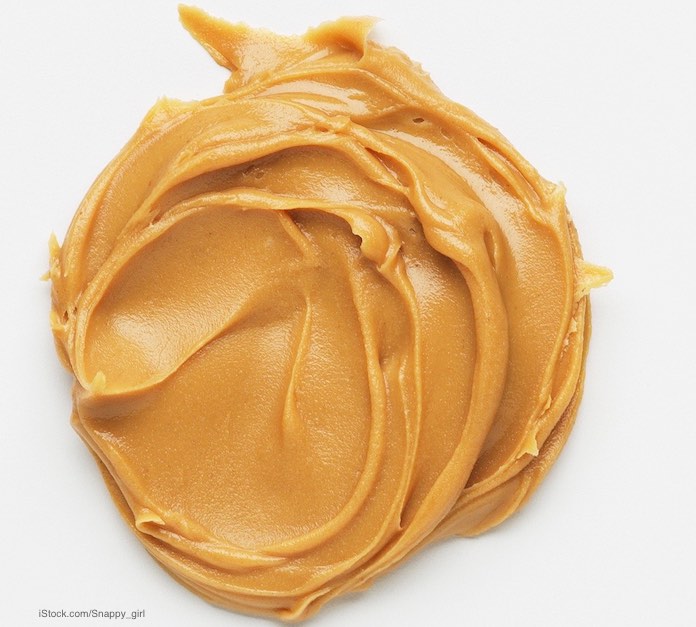The E. coli O157:H7 – HUS outbreak linked to I.M. Healthy SoyNut Butter products is, unfortunately, nothing new. There is a long string of multistate food poisoning outbreaks linked to different types of nut butters in this country that goes back years.

In the current outbreak, sixteen people in nine states are sickened. Eight people have been hospitalized, and five have developed hemolytic uremic syndrome (HUS) a complication of a Shiga toxin-producing E. coli infection that can cause kidney failure.
This type of ready-t0-eat product seems innocent. After all, it doesn’t contain leafy greens, raw milk, or raw meat, three of the foods most commonly associated with pathogenic bacteria. Everyone has a jar of peanut butter or nut butter in their pantry. And everyone from kids to adults loves it.
Unfortunately, nut butters are made from raw agricultural products: peanuts, almonds, and soybeans. And, like all raw agricultural products, those nuts can be contaminated with pathogenic bacteria. These pathogens can be transferred to the finished product.
In 2015, a Salmonella Paratyphi B variant L(+) tartrate (+) infections were linked to JEM raw brand sprouted nut butter spreads. At least 13 people in 10 states were sickened. Epidemiologic evidence indicated that that product was the likely source of the outbreak.
In 2014, a multistate Salmonella outbreak linked to nSpired Natural Foods almond and peanut butters sickened six people in five states. One person was hospitalized in this outbreak. FDA officials isolated Salmonella Braenderup from environmental samples taken during routine inspections at the facility in Ashland, Oregon. A search of the PulseNet database identified ill persons who had been infected with the same Salmonella bacteria with the same PFGE fingerprint.
In 2012, a Salmonella Bredeney outbreak linked to Sunland peanut butter sickened 42 people in 20 states. Most of those patients, 61%, were under the age of 10. Investigations revealed that Trader Joe’s Valencia Peanut Butter, manufactured by Sunland, Inc. of Portales, New Mexico was the likely source of this outbreak. Testing conducted by the Washington State Department of Agriculture laboratory, the New Jersey Department of Health laboratory, and the Virginia Division of Consolidated Laboratory Services isolated the outbreak strain of Salmonella Bredeney from opened jars of Trader Joe’s Valencia Creamy Peanut Butter made with Sea Salt collected from ill persons’ homes. FDA found the presence of Salmonella in 28 environmental samples during a plant inspection at Sunland. Three of those samples were the outbreak strain of Salmonella Bredeney.
And in 2009, a massive Salmonella Typhimurium outbreak linked to Peanut Corporation of America products sickened 714 people in 46 states. Those illnesses may have contributed to nine deaths. The Minnesota Department of Agriculture Laboratory isolated the outbreak strain of Salmonella Typhimurium from an open 5 pound container of King Nut brand creamy peanut butter. That product was used in long term care facilities, hospitals, and schools. Tests conducted in three other states found Salmonella in that product. King Nut is produced by Peanut Corporation of America. The peanut butter was used to make peanut butter crackers and dog treats as well.
In the current outbreak, eight people have been hospitalized, which is a very high rate, even for E. coli infections. And five people, or 31%, have developed hemolytic uremic syndrome (HUS), a type of kidney failure. That rate is also very high, since in most STEC outbreaks, only about 5 to 10% of patients develop that complication.
Check your pantry to see if you have any I.M. Healthy SoyNut Butter products, I.M. Healthy granola products, or Dixie Diner’s Club Carb Not Beanit Butter, which have all been recalled. Those products have a long shelf life and are probably still in consumers’ homes.
And if you ate any I.M. Healthy SoyNut Butter products have been ill, see your doctor. The symptoms of an E. coli O157:H7 infection include severe stomach and abdominal pain, diarrhea that is watery and/or bloody, a mild fever, and possible vomiting. The symptoms of HUS include little or no urine output, lethargy, pale skin, easy bruising, and bleeding from the nose or mouth.




